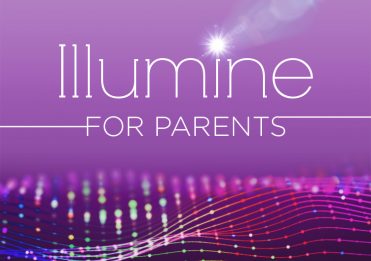Ms Jo Genders, Director of English
Cogito, ergo sum. I think, therefore I am.
While a 17th century philosopher might seem an unusual place to open a conversation about education in the 21st century, René Descartes’ dictum still rings true.
Now is the time for critical thinkers. A quick scroll online—sadly, the source of most information these days—would have us believe we are on the brink of apocalypse. This tendency to view the world through a ‘lens of crisis’ (Addison) means that discerning fake from fact must be countered by deep and critical thinkers—the types of thinkers we nurture at BGGS.
Critical thinking has long been enshrined in Australian educational policies. The recent Alice Springs (Mparntwe) Education Declaration determined ‘active and informed members of the community’ as central to Australia’s educational vision (p.6, 2019). The Declaration’s goal of learners who ‘think deeply and logically’, are ‘inquisitive’ and ‘test different sources and types of knowledge’ (p.7, 2019) connects with the School’s own Strategic Design 2020-2022.
However, keeping critical thinking front and centre can be hard work when competing forces threaten to undermine our goal. When big data tells us that Australian children are falling behind the rest of the world, a cry for a ‘back to basics’ approach, and a de-emphasis on ‘soft skills’ rings out (‘Education Minister Flags Plan to Simplify’, 2018). This simplification of the complexities of teaching and learning treats knowing and thinking as a ‘zero sum game’ (Louden, 2018), suggesting the two cannot coexist. Other conversations around the difficulty in assessing critical thinking (Lucas, 2016) devalue its usefulness, ironically, by showing an absence of the very skill so crucially needed to sort the wheat from the chaff in wider educational conversations.
At our School, and especially in the English Faculty, critical thinking isn’t just a buzzword added to our curriculum to please policymakers. It sits at the very core of educating young women to be curious, principled, critical thinkers. In English, Literature, and Extension classes, knowledge becomes a product of thinking and it is through the ‘messy work’ (Ritchhart, 2015, p.120) that thinking involves that our girls produce ‘wonderful ideas that no one else has happened upon before’ (Duckworth, 2006b, p. 14). In this way, the ‘messy work’ builds and shapes knowledge, by acknowledging the value in working it out.
Critical thinking doesn’t just happen—it can be hard work for the girls, and teaching girls to think critically can be hard work for the teacher. For a range of reasons—fear of failure, desire for perfection, the constraints of time—girls will sometimes plead for the ‘right’ answer. To this point, Linda Pettigrew’s work, and the work of other critical explorers such as Lisa Schneier and Naomi Mulvihill, serve as an important reminder that that we mustn’t ‘[dance] the students toward a pre-conceived response’ (Schneier, L, 1986) but ‘[try] to understand their way of understanding’ and be ‘willing to wait – in silence’ (Pettigrew, 2006, p.4). It is impossible to let our students become all that they are and all that they can be, if we do not allow them the space and time to think, and to articulate that thinking.
Our Senior English course is a case in point. This term, our Year 12 students have been considering and contemplating female agency through critical engagement with Brontë’s Jane Eyre and Crowley’s film, Brooklyn. In true English fashion, we haven’t started with the knowledge, but with the thinking. In exploring the texts’ contribution to contemporary conversations, girls have been grappling with some big ideas, which has resulted in that ‘messy’ thinking. We’ve been interrogating what the texts have to say about the obstacles women navigate in charting their own course through life, as well as how our perspectives might be shaped by our modern context of readership, such as misogynistic depictions of Duchesses Meghan and Kate, or the demonisation of activist Greta Thunberg. So, what of that criticism levelled at critical thinking—that you can’t assess thinking because it’s invisible? When a girl can articulate how Mr Rochester’s version of marriage sounds controlling because he uses words like ‘shall’, ‘will’ and ‘must’, and notes Bronte’s description of Jane’s discomfort—evidenced in ‘chain’, ‘circlet’, ‘stamped’, ‘clasped’ and ‘loaded’ (1847, p.299)—to conclude that marriage is depicted as a trap, that’s analysis, and that’s critical thinking.
In Year 11, we examine Blade Runner—a 1982 sci-fi film set in 2019—in order to critically engage with contemporary discussions around marginalisation, isolationist policies, governmental control, and the very core of humanity. We let students contemplate, consider and cerebrate. They draw new connections through interrogating news articles, Instagram posts, and even Presidential tweets.
Our Year 10 students study Romantic poetry—John Keats, William Blake, Mary Robinson—but the real critical thinking comes when they read, interrogate, discuss, and connect the poems’ messages to their contemporary worlds by critically engaging with the ideas of climate change, increased urbanisation, and human disconnection.
Critical thinking sits at the front of these kinds of inquiries; after all, placing texts in conversation demands the courage to read against the grain, exposing assumptions about women, about the climate, and about humans, which simply don’t stack up in these complex times.
When we encourage thinking, when we inspire interrogation, and when we allow ‘time for confusion’ (Duckworth, 2006a, p.81) and the space for our girls to commit to this curiosity, we help them became who they are. A concomitant effect of deep thinking is confidence and independence, which will pave the way to critically thoughtful lives.
As Descartes said, thinking is at the core of our human experience. As teachers, we take great delight in supporting our girls’ ability to think in ways that will better their own lives and the world in which we live.
References
Addison, B (2020, February.) Noticing Learning and Noticing Self: Lenses, Criticality, Activism and Hope. Conference paper presented at BGGS Staff Professional Learning Week, 23/1/2020.
Bronte, C. (1847). Jane Eyre. Davies, S. (Ed). London: Penguin Random House.
Duckworth, E. (2001). Tell Me More. New York, NY: Teachers College Press.
Duckworth, E. (2006a). “The virtues of not knowing.” In E. Duckworth (Ed.), ‘The having of wonderful ideas” and other essays on teaching and learning (3rd ed, pp. 63-68). New York, NY: Teachers College Press. (Original essay published in 1987).
Duckworth, E. (2006b). “The having of wonderful ideas.” In E. Duckworth (Ed.), “The having of wonderful ideas” and other essays on teaching and learning (3rd ed, pp. 1-14). New York, NY: Teachers College Press. (Original essay published in 1987).
Education Minister flags plan to simplify ‘cluttered’ national curriculum and ‘get back to basics’ (2018). Retrieved from: https://www.abc.net.au/news/2018-12-10/education-minister-dan-tehan-flags-revamp-of-national-curriculum/10600064
Louden, B. (2018). Gonski 2.0: Teaching Creativity and Critical Thinking Through the Curriculum is Already Happening. Retrieved from: https://theconversation.com/gonski-2-0-teaching-creativity-and-critical-thinking-through-the-curriculum-is-already-happening-95922
Lucas, B. (2016). Schools will teach ‘soft skills’ from 2017, but assessing them presents a challenge. https://theconversation.com/schools-will-teach-soft-skills-from-2017-but-assessing-them-presents-a-challenge-68749
Mparntwe Education Declaration. (2019). Retrieved from: https://uploadstorage.blob.core.windows.net/public-assets/education-au/melbdec/ED19-0230%20-%20SCH%20-%20Alice%20Springs%20(Mparntwe)%20Education%20Declaration_ACC.pdf
Pettigrew, N. G. (2006). A Listening Pedagogy. Unpublished manuscript.
Ritchhart, R. (2015). Creating Cultures of Thinking: The 8 Forces We Must Master To Truly Transform Our School. Jossey-Bass, San Francisco.
Schneier, L. (1986). Dancing in the Hall. Unpublished manuscript.
Strategic Design 2020-2022. (2019). Retrieved from: https://www.bggs.qld.edu.au/wp-content/uploads/2020/01/BGGS_Strategic_Design_2020-2022.pdf



